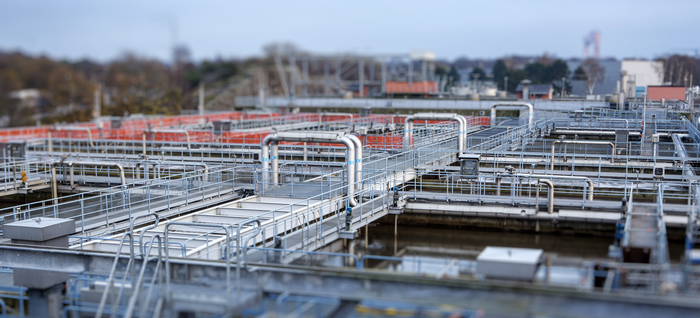
Like humans, wastewater treatment plants can get sick due to viral attacks. New research from the Chalmers University of Technology, Sweden, reveals the implications for the surrounding environment if the plant catches a cold.
The efficient running of wastewater treatment plants is an essential part of modern society. In the sewage industry, microscopic bacteria often execute the ‘work’ of wastewater plants. Biological processes carried out by these bacteria turn the wastewater into clean water safe to discharge into the environment. Essentially the bacteria break down the pollutants and purify the water, keeping the plant running efficiently.
“A large treatment plant has billions of bacteria that work in a treatment process called ‘activated sludge’. The bacterial communities are constantly exposed to viruses that infect them, so the question we asked ourselves was whether the process can periodically be more exposed and what happens then,” says Oskar Modin, Professor at the Department of Architecture and Civil Engineering at Chalmers University of Technology, Sweden.
Oskar Modin and fellow researchers measured the concentration of virus particles released from four different wastewater treatment plants in Sweden and compared this with how much organic carbon was released simultaneously. This relationship between virus and effluent quality is a first step in understanding the impact of a viral infection on a treatment plant.
“Sick” wastewater plants might affect aquatic ecosystems.
From the study, the researchers have shown a clear relationship between virus concentration and the amount of dissolved organic carbon present in the effluent water. This is because viruses could affect the concentration in two ways, firstly because they contain carbon and secondly. After all, they rupture host bacteria cells, causing carbon to be released.
“When we measured virus particles in the water, we found a connection between viruses and organic carbon – when there was more of one, there was also more of the other,” says Oskar Modin.
More dissolved organic carbon in the effluent water means that microorganisms consume more oxygen in the surrounding bodies of water where the effluent is discharged. This could have potential negative impacts on the aquatic ecosystems nearby. There are therefore tough regulations in place for wastewater treatment plants to reach low concentrations of biodegradable organic carbon in their effluent. A small increase of organic carbon within the plant can also lead to increased resource consumption, including money, energy and materials, in processes for disinfection and pharmaceuticals removal, which are implemented at wastewater treatment plants in some parts of the world. Organic carbon in the water affects the efficiency of these processes.
No infection risk for humans
Viruses are dependent on a host to replicate. Since biological wastewater treatment processes have a high concentration of active bacteria that can serve as hosts, there will be a lot of viruses capable of infecting those bacteria. This leads to a net increase in virus particles as the wastewater moves through a plant.
“Viruses are often specialised in a certain species, which means that the same virus cannot infect humans and bacteria. So, the ” generated ” viruses in a wastewater treatment plant do not infect humans but only affect microbial communities. One possible way to influence the amount of viruses in treatment plants could be to adjust how the treatment plant operates. We saw differences between the treatment plants in the study, which we believe may be related to the design or control of the biological treatment processes,” says Oskar Modin.
More about the scientific study:
The scientific article “A relationship between phages and organic carbon in wastewater treatment plant effluents” has been published in Water Research X and was written by Oskar Modin, Nafis Fuad, Marie Abadikhah, David l’Ons, Elin Ossiansson, David J. I. Gustavsson, Ellen Edefell, Carolina Suarez, Frank Persson, Britt-Marie Wilén
The researchers are active at the Chalmers University of Technology, the University of Connecticut, Gryaab AB, VA SYD, and Lund University.
The study behind the paper was financed by Svenskt Vatten through VA Teknik Södra and involved wastewater treatment plants in the Swedish municipalities of Lund, Malmö, Kalmar and Gothenburg. Funding was also provided by the Swedish Research Council for Sustainable Development (FORMAS).




